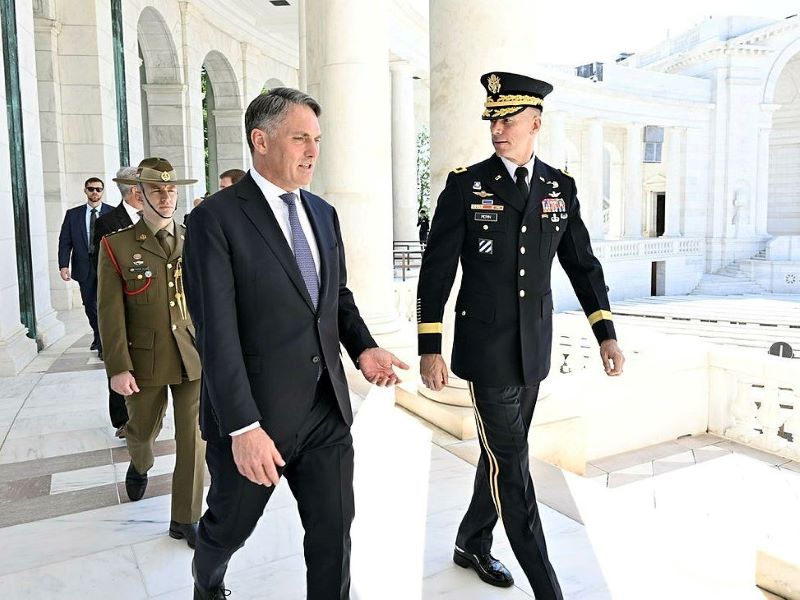The number of external contractors working at the Department of Defence has grown by 55 per cent since the start of the pandemic, as the ongoing skills shortage takes a bite out of its internal workforce.
Defence has also warned of future “workforce pressures” stemming from several large programs of work, including those that result from the trilateral AUKUS security partnership with the United States and the United Kingdom.
In a briefing to Defence Minister Richard Marles, released following a Freedom of Information request earlier this month, Defence said its “complex” work made an “integrated workforce” necessary.
“Delivering national security capability requires reliance on high-end technologies such as the development of a nuclear-powered submarine capability. Defence requires people with the skills, training, and experience to deliver these capabilities,” the incoming brief said.

“Over the last three years Defence’s integrated workforce has increased its reliance on contractors and outsourced service providers (OSPs) to deliver this complexity. OSPs have increased seven per cent in the last 12 months alone.”
A breakdown of its external workforce census results outlined in the brief show a 55 per cent increase in full-time Defence contractors between March 2020 and March 2022, from 5,361 to 8,311 personnel.
The OSPs workforce, meanwhile, has increased by 14 per cent to 26,199 personnel in that time, while Defence’s relatively small number of consultants have grown by 45 per cent, from 255 in March 2020 to 370 in March 2022.
According to an audit that uncovered issues with Defence’s oversight of contractors earlier this year, around a third of the 8311 contractors work in project management, followed by information technology (18 per cent) and platform or fleet sustainment and maintenance (12 per cent).
Defence put the increase at least partially down to “lower recruiting achievement and higher separation rates resulting in the Australian Defence Force and Australian Public Services” over the last year.
“These workforce shortages are being felt more directly in key workforce segments across the enterprise such as engineering, intelligence, communications and cyber,” brief released last week said.
While not referenced in the brief, Defence’s growing external workforce is also down to its APS cap, according to an Australian Strategic Policy Institute (ASPI), which warned in a report last year of a “looming iceberg” with contractors more than twice as expensive as public servants.
Defence said its “workforce pressures” were growing as the “wider labour market responds to significant shock”, namely “forecast historic low unemployment rates… and skill shortages persisting in emerging technologies and specialist skill areas”.
It also expects these demands will only increase for a “range of new capabilities such as nuclear-powered submarines, AUKUS advanced capabilities, Space Command, guided weapons and national naval building”.
“As the understanding of the workforce requirements for each of these areas matures and the demand is quantified it will increase pressure on Defence’s personnel requirements particularly in skills areas that are highly sought after in the Australian labour market,” Defence said.
Earlier this month, the government agreed to establish a joint state and Commonwealth taskforce to develop the ensure Australia has the defence industry workforce to support critical national security projects.
Defence is planning to provide government with an annual report on its workforce growth in the final three months of the year. Its total workforce is expected to grow by 18,500 to approximately 100,000 by 2040.
Do you know more? Contact James Riley via Email.

